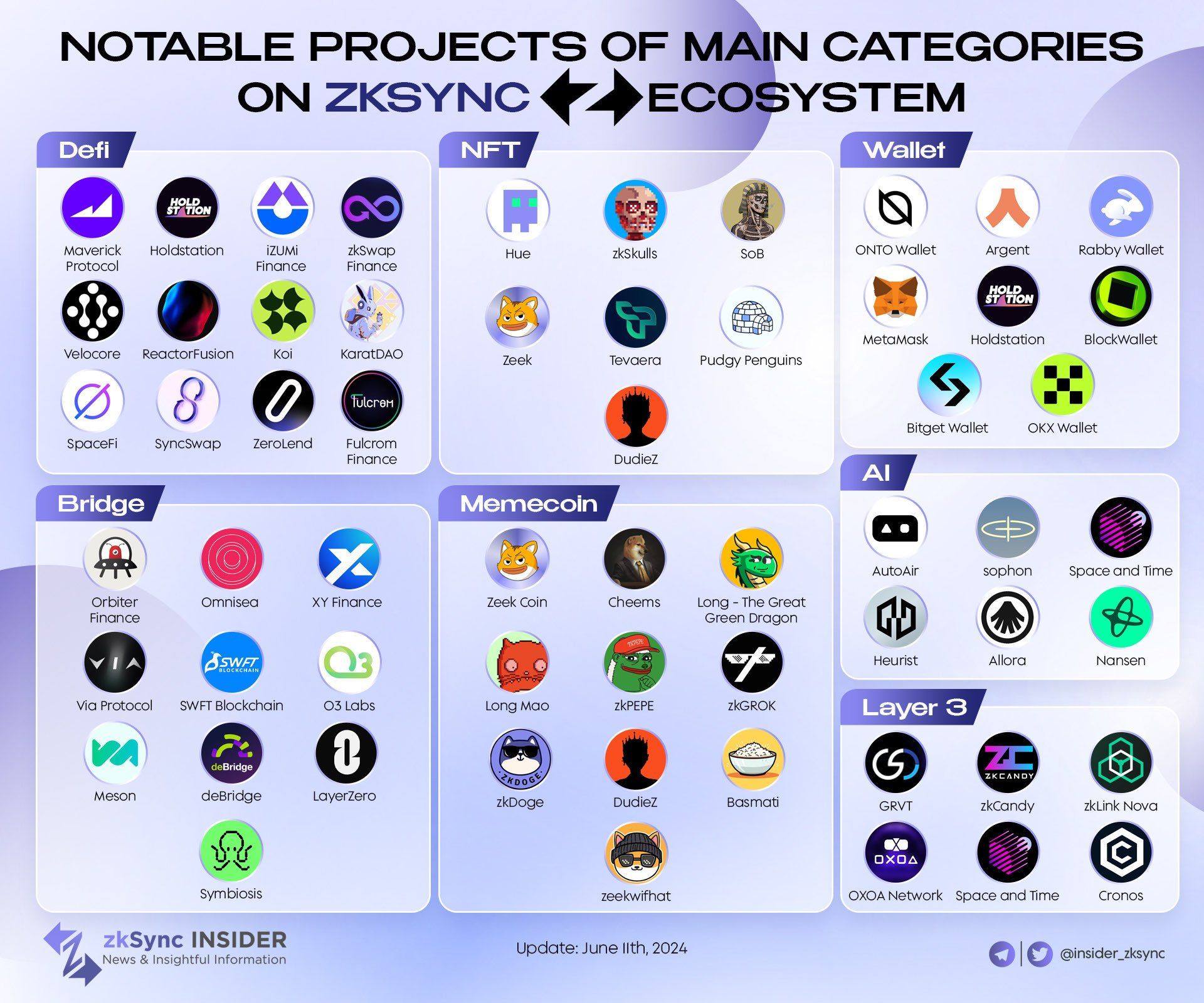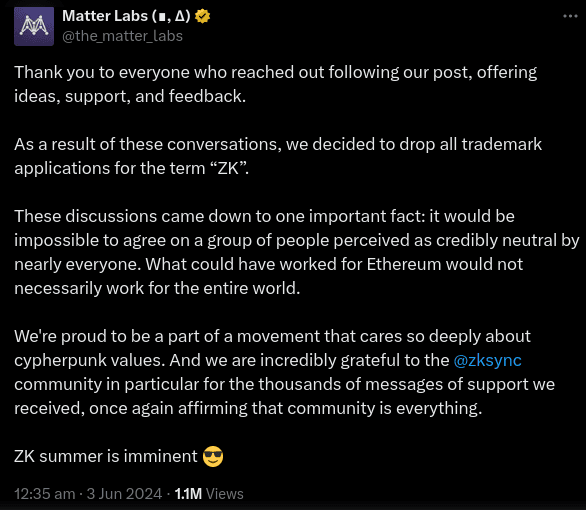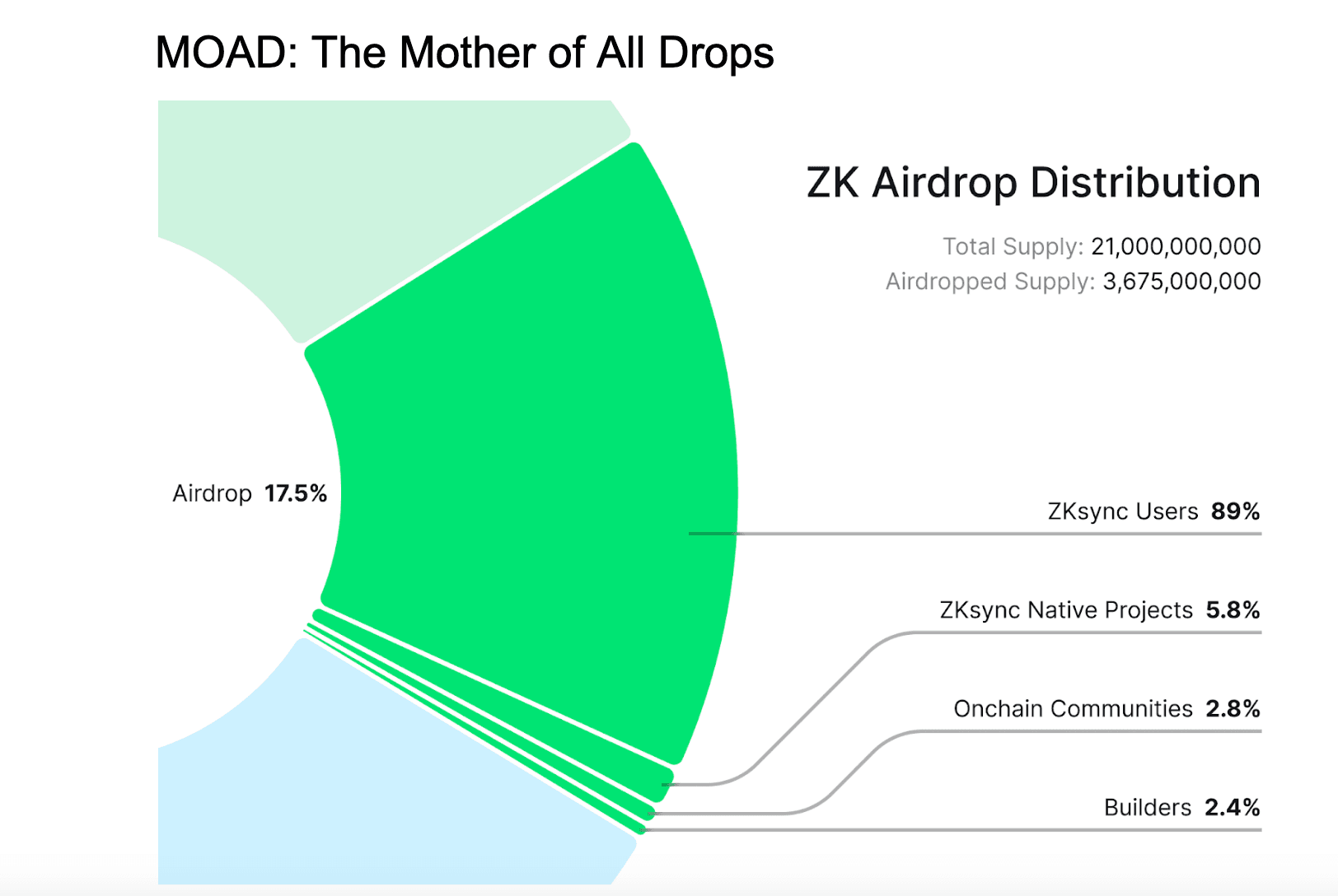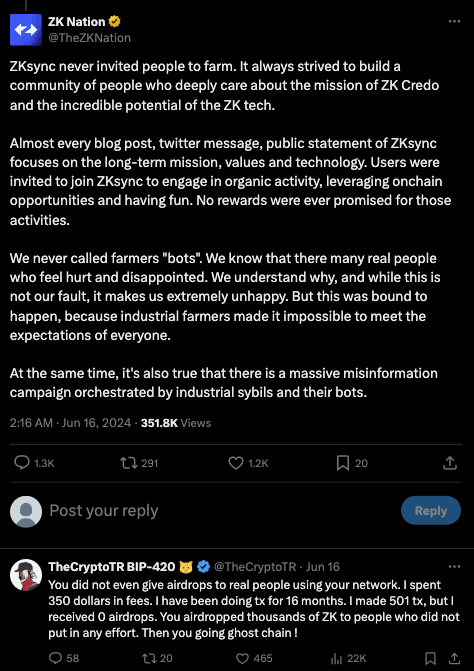zkSync’s launch heats up the Layer 2 narrative

The Ethereum ecosystem has long grappled with scalability challenges, hindering its mainstream adoption on account of transaction costs. While various Layer 2 solutions have emerged to address these issues, zkSync stands out for leveraging the power of Zero-Knowledge (ZK) technology to unlock speed, efficiency, and user experience.
This deep dive explores zkSync's journey, its recent achievement of EVM compatibility, the impact of its massive airdrop, and the network's potential to reshape the future of Ethereum.
What is zkSync?
In traditional blockchain systems like Ethereum, the process of verifying transactions imposes limits on how much the network can grow or "scale." When numerous users try to make transactions simultaneously, the network can become congested, leading to increased transaction costs.
To address Ethereum's scalability issues, several innovative solutions have emerged, with "rollups" or Layer 2s (L2s) being the most notable. Rollups enhance scalability by processing and validating transactions off-chain and then consolidating and uploading them as a single batch onto the main chain
zkSync, developed by Matter Labs, is one such Layer 2 scaling solution. It utilizes ZK-rollups, a technology that bundles thousands of transactions off-chain and generates a cryptographic proof of their validity. This proof is then submitted to the Ethereum mainnet, verifying the transactions without requiring the network to re-execute them.
Why are ZK Rollups Superior?
In simpler terms, rollups (L2s) are designed to scale the network with faster throughput and lower costs by batching transactions off-chain. Some advantages of ZK rollups are:
Scalability: By processing transactions off-chain, zkSync drastically increases transaction throughput, currently estimated to handle over 2,000 transactions per second.
Cost-Efficiency: Since only a small proof is submitted to Ethereum, transaction fees on zkSync are significantly lower, often a fraction of a cent compared to dollars on the mainnet.
Security: zkSync inherits the security of the Ethereum mainnet, as any fraudulent activity would be immediately detected and rejected by the underlying consensus mechanism.
Privacy: ZK proofs inherently conceal transaction details, offering an added layer of privacy for users.
The depth of zkSync ecosystem
zkSync boasts a vibrant ecosystem featuring over 200 Dapps and more than 823,000 active wallets. Additionally, it has a DeFi Total Value Locked (TVL) of $93.4 million.

Source: X
ZK is a public good: Matter Labs concedes
Matter Labs, the company behind the zkSync Ethereum scaling solution, recently faced significant backlash for attempting to trademark the term "zero-knowledge" (ZK).
This sparked outrage within the crypto community, with prominent figures arguing that ZK technology, crucial for privacy and scalability, is a public good that no single entity should own. If the trademark would have been approved, other leading Layer 2 chains may have to reconsider using ZK technology in their development roadmap. The pressure proved effective, leading Matter Labs to publicly announce the withdrawal of their trademark applications.

Source: X
Impact of the ZK token airdrop
To further decentralize the network and reward early adopters, zkSync launched a massive airdrop of its native ZK token, distributing 17.5% of the total supply, valued at approximately $3 billion, to nearly 700,000 wallets.

Source: Google Images
Many airdrop farmers were active over the last year trying to gain an allocation from this airdrop. But zkSync team decided to only honour ‘organic’ activity and disregarded such efforts. This led to another public outcry.

Source: X
ZK token performance and outlook
Airdrops followed by token listings typically start off with strong selling pressure from participants taking profits. ZK token launched on Binance, Bybit, Gate.io, Kucoin and Giottus among others and has dropped 50% to about $0.19 now.
However, a strong rebound is likely once the initial sell-offs are done with. With a current market capitalization of $685 million and a fully diluted market capitalization of $4 billion, the outlook for zkSync appears promising in the long term. Comparing zkSync (ZK) to other layer 2 rollup tokens such as Optimism (OP), Arbitrum (ARB), and Starknet (STRK), fully diluted market caps above $8 billion are possible, suggesting a potential 50%-60% price increase in the mid-term.
The ZK token plays a crucial role in securing ZK Porter, ZKSync's innovative data availability solution, and powering the network's upcoming decentralized sequencer. These advancements will further enhance scalability, reduce costs, and strengthen zkSync's commitment to decentralization.
zkSync, we believe, is poised to transform the Ethereum landscape, paving the way for a future where transactions are fast, cheap, secure, and accessible to everyone.
Not subscribed to Cryptogram yet? Subscribe here
Disclaimer: Crypto products and NFTs are unregulated and can be highly risky. There may be no regulatory recourse for any loss from such transactions. Please do your own research before investing and seek independent legal/financial advice if you are unsure about the investments.
Updated on: 13th August, 2025 1:15 PM